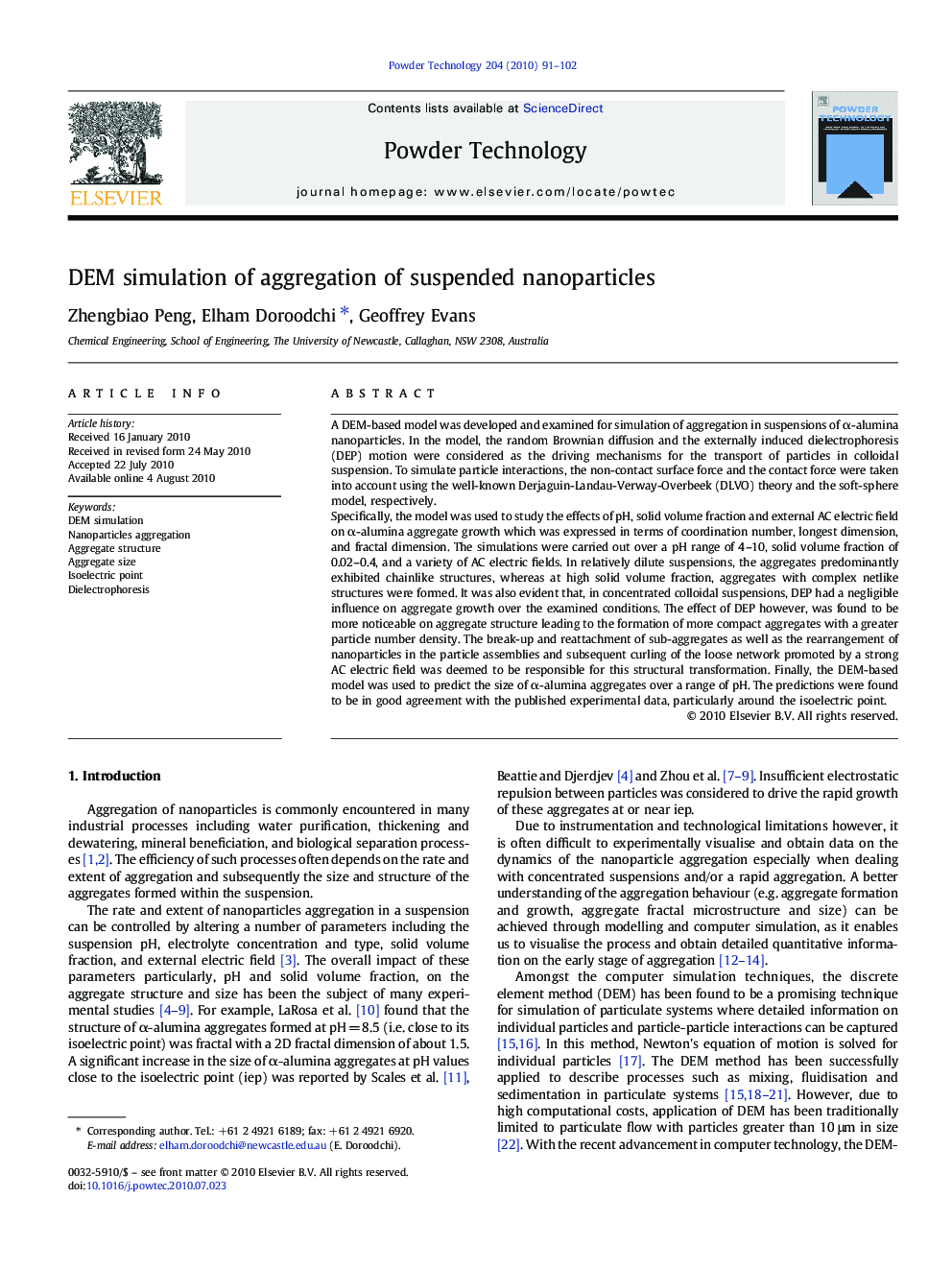| کد مقاله | کد نشریه | سال انتشار | مقاله انگلیسی | نسخه تمام متن |
|---|---|---|---|---|
| 237762 | 465724 | 2010 | 12 صفحه PDF | دانلود رایگان |

A DEM-based model was developed and examined for simulation of aggregation in suspensions of α-alumina nanoparticles. In the model, the random Brownian diffusion and the externally induced dielectrophoresis (DEP) motion were considered as the driving mechanisms for the transport of particles in colloidal suspension. To simulate particle interactions, the non-contact surface force and the contact force were taken into account using the well-known Derjaguin-Landau-Verway-Overbeek (DLVO) theory and the soft-sphere model, respectively.Specifically, the model was used to study the effects of pH, solid volume fraction and external AC electric field on α-alumina aggregate growth which was expressed in terms of coordination number, longest dimension, and fractal dimension. The simulations were carried out over a pH range of 4–10, solid volume fraction of 0.02–0.4, and a variety of AC electric fields. In relatively dilute suspensions, the aggregates predominantly exhibited chainlike structures, whereas at high solid volume fraction, aggregates with complex netlike structures were formed. It was also evident that, in concentrated colloidal suspensions, DEP had a negligible influence on aggregate growth over the examined conditions. The effect of DEP however, was found to be more noticeable on aggregate structure leading to the formation of more compact aggregates with a greater particle number density. The break-up and reattachment of sub-aggregates as well as the rearrangement of nanoparticles in the particle assemblies and subsequent curling of the loose network promoted by a strong AC electric field was deemed to be responsible for this structural transformation. Finally, the DEM-based model was used to predict the size of α-alumina aggregates over a range of pH. The predictions were found to be in good agreement with the published experimental data, particularly around the isoelectric point.
In this study, the DEM computational technique was applied to simulate the aggregation behaviour of suspended nano-sized particles. Specifically, the model was used to examine the effects of key factors such as pH, solid volume fraction, and the frequency and intensity of the external electric field on aggregate growth.Figure optionsDownload as PowerPoint slide
Journal: Powder Technology - Volume 204, Issue 1, 10 December 2010, Pages 91–102